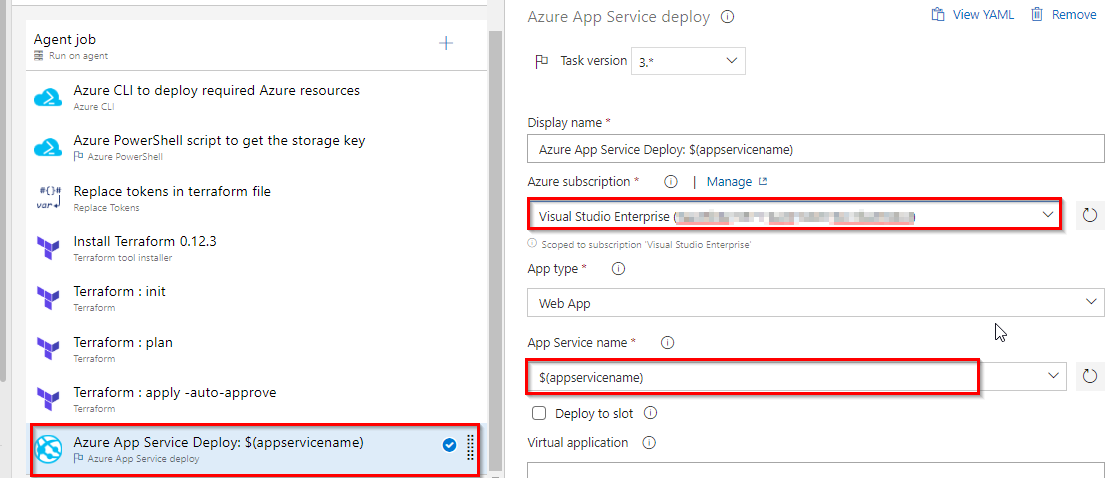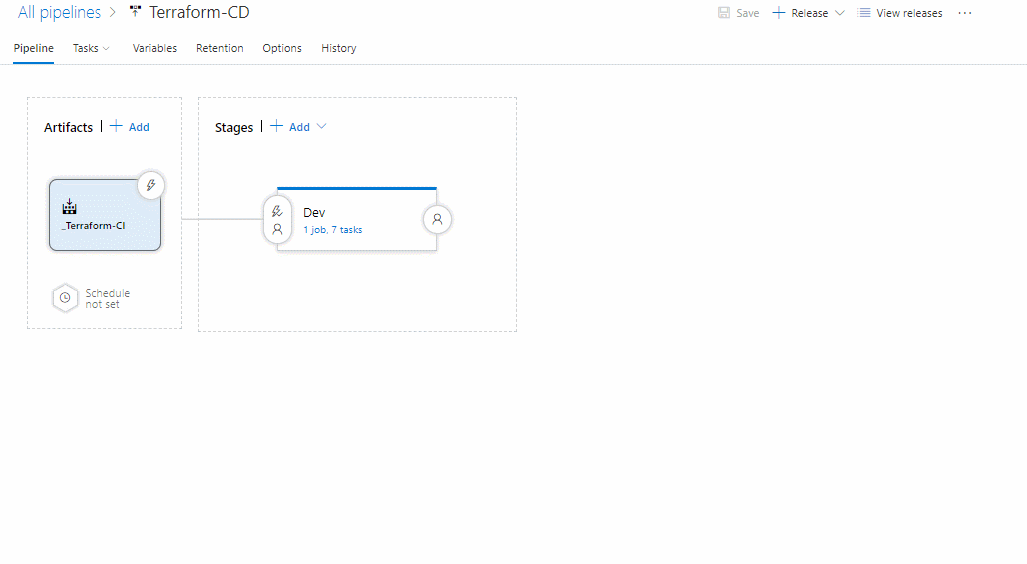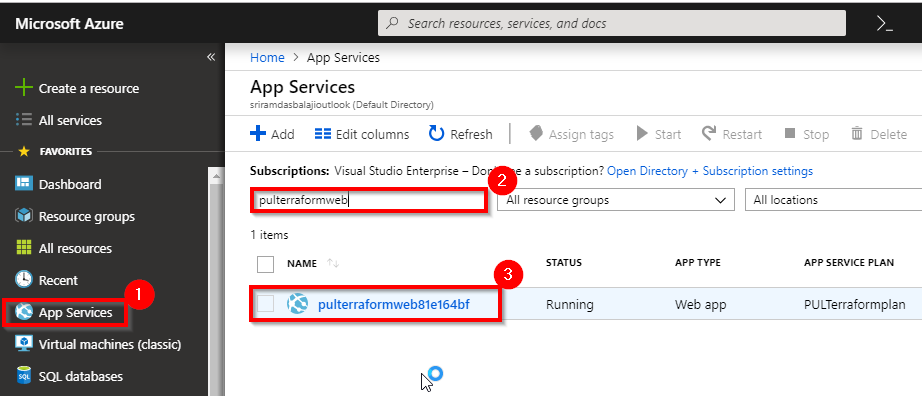Azure DevOps provides developer services for allowing teams to plan work, collaborate on code development, and build and deploy applications. Azure DevOps supports a collaborative culture and set of processes that bring together developers, project managers, and contributors to develop software. It allows organizations to create and improve products at a faster pace than they can with traditional software development approaches.
in the other hand, Terraform is a tool for building, changing and versioning infrastructure safely and efficiently. Terraform can manage existing and popular cloud service providers as well as custom in-house solutions. Configuration files describe to Terraform the components needed to run a single application or your entire datacenter. Terraform generates an execution plan describing what it will do to reach the desired state, and then executes it to build the described infrastructure. As the configuration changes, Terraform is able to determine what changed and create incremental execution plans which can be applied.
In this lab, we will see how both services work together to deploy an application. We have an application called PartsUnlimited. We will set up Terraform as part of Continuous Deployment (CD) with Azure DevOps (formerly Visual Studio Team Services (VSTS)).
In this lab, you will see
- How open source tools, such as Terraform can be leveraged to implement Infrastructure as Code (IaC)
- How to automate your infrastructure deployments in the Cloud with Terraform and Azure Pipelines
Pre-requisites:
-
An active Azure DevOps account.
-
Project Admin rights to the Azure devOps account.
-
An account in Azure.
Lab Tasks:
- Import project terraform demo
- Examine the terraform file (IaC) in your source code
- Build your application using Azure CI Pipeline
- Deploy resources using terraform (IaC) in Azure CD Pipeline
Resources:
- Use Azure DevOps Demo Generator | Microsoft Docs
- Overview of Terraform on Azure – What is Terraform? | Microsoft Docs
- What is Azure Pipelines? – Azure Pipelines | Microsoft Docs
Success Criteria:
Estimated Lab Time:
- approx. 80 minutes
Challenge 1: Examine the terraform file (IaC) in your source code
In this lab, you will use PartsUnlimited which is an example eCommerce website developed using .Net Core. You will examine the terraform file which helps you to provision the Azure Resources required to deploy PartsUnlimited website. Navigate to the project you created above using Azure DevOps Demo Generator Select Repos. Switch to terraform branch. Make sure that you are now on the terraform branch and Terraform folder is there in the repo. Select the webapp.tf file under the Terraform folder. Go through the code. webapp.tf is a terraform configuration file. Terraform uses its own file format, called HCL (Hashicorp Configuration Language). This is very similar to YAML. In this example, we want to deploy an Azure Resource group, App service plan and App service required to deploy the website. And we have added Terraform file (Infrastructure as Code) to source control repository in your Azure DevOps project which can deploy the required Azure resources. If you would like to learn more about the terraform basics click here. In this exercise, you will build your application and publish the required files to an artifact called drop. Navigate to Pipelines –> Pipelines. Select Terraform-CI and click Edit. Your build pipeline will look like as below. This CI pipeline has tasks to compile .Net Core project. The For more guidance on how to build .Net Core projects with Azure Pipelines see here. In addition to the application build, we need to publish terraform files to build artifacts so that it will be available in CD pipeline. So we have added Copy files task to copy Terraform file to Artifacts directory. Now click Queue to trigger the build. Once the build succeeds, verify that the artifacts have Terraform folder and PartsUnlimitedwebsite.zip file in the drop. In this exercise, you will create azure resources using Terraform as part of your deployment(CD) pipeline and deploy the PartsUnlimited application to the App service provisioned by Terraform. Navigate to Pipelines –> Releases. Select Terraform-CD and click Edit. Select Dev stage and click View stage tasks to view the pipeline tasks. You will see the tasks as below. Select the Azure CLI task. Select the Azure subscription from the drop-down list and click Authorize to configure Azure service connection. By default, Terraform stores state locally in a file named terraform.tfstate. When working with Terraform in a team, use of a local file makes Terraform usage complicated. With remote state, Terraform writes the state data to a remote data store. Here we are using Azure CLI task to create Azure storage account and storage container to store Terraform state. For more information on Terraform remote state click here Select the Azure PowerShell task. Select Azure service connection from the drop-down. To configure the Terraform backend we need Storage account access key. Here we are using Azure PowerShell task to get the Access key of the storage account provisioned in the previous step. Select the Replace tokens task. If you observe the webapp.tf file in Exercise 1, Step 3 you will see there are few values are suffixed and prefixed with __. For example __terraformstorageaccount__. Using Replace tokens task we will replace those values with the variable values defined in the release pipeline. Terraform tool installer task is used to install a specified version of Terraform from the Internet or the tools cache and prepends it to the PATH of the Azure Pipelines Agent (hosted or private). When running Terraform in automation, the focus is usually on the core plan/apply cycle. The main Terraform workflow is shown below: i. Initialize the Terraform working directory. ii. Produce a plan for changing resources to match the current configuration. iii. Apply the changes described by the plan. The next Terraform tasks in your release pipeline help you to implement this workflow. Select the Terraform init task. Select Azure service connection from the drop-down. And make sure to enter the container name as terraform. For the other task parameters information see here This task runs Select the Terraform plan task. Select Azure service connection from the drop-down. The Select the Terraform Apply task. Select Azure service connection from the drop-down. This task will run the Select Azure App Service Deploy task. Select Azure service connection from the drop-down. This task will deploy the PartsUnlimited package to Azure app service which is provisioned by Terraform tasks in previous steps. Once you are done Save the changes and Create a release. Once the release is success navigate to your Azure portal. Search for pulterraformweb in App services. Select pulterraformweb-xxxx and browse to view the application deployed. Do you want to learn more about Terraform? If yes click here for Terraform documentation. Congratulations on successfully setting up Continuous Integration and Continuous Deployment with Azure DevOps.
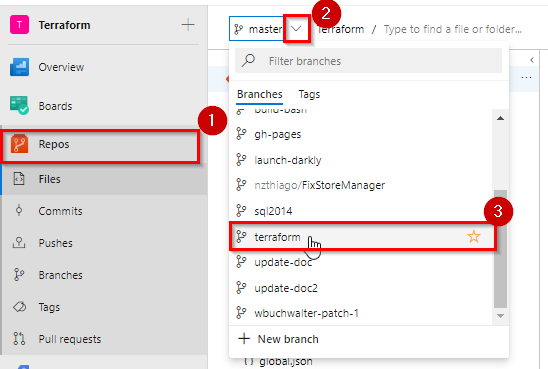
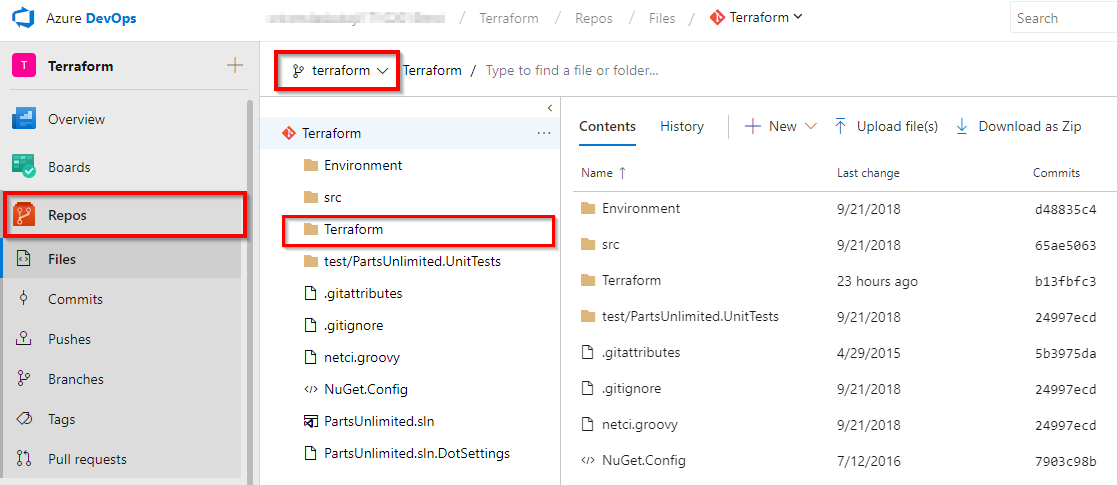
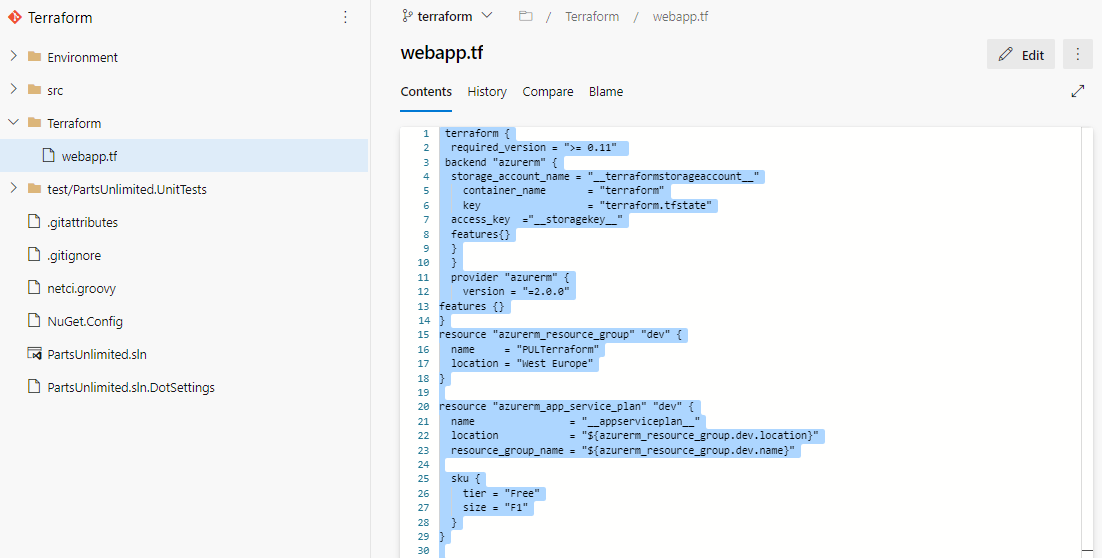
Challenge 2 – Build your application using Azure CI Pipeline

dotnet tasks in the pipeline will restore dependencies, build, test and publish the build output into a zip file (package) which can be deployed to a web application.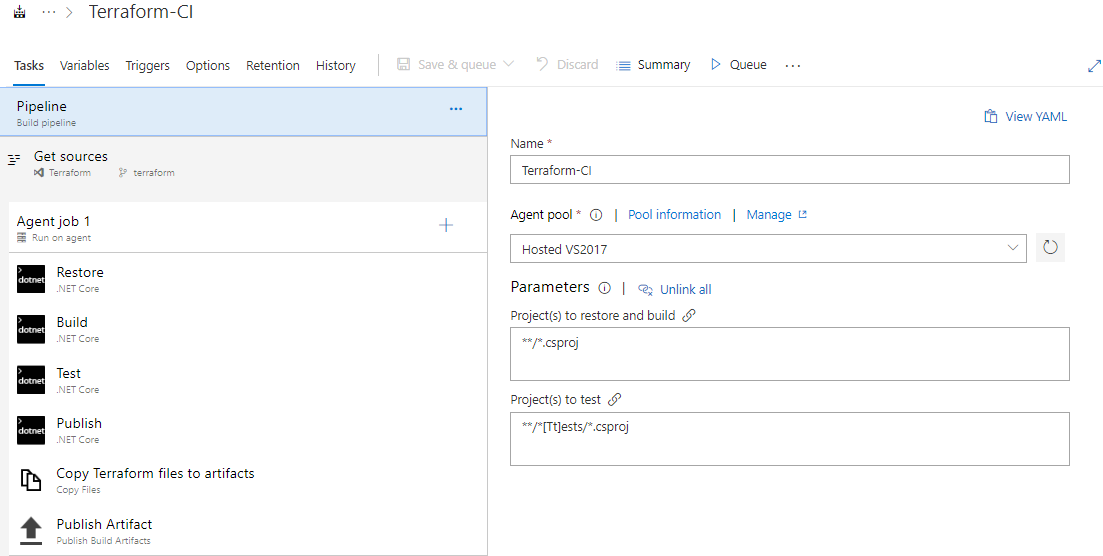
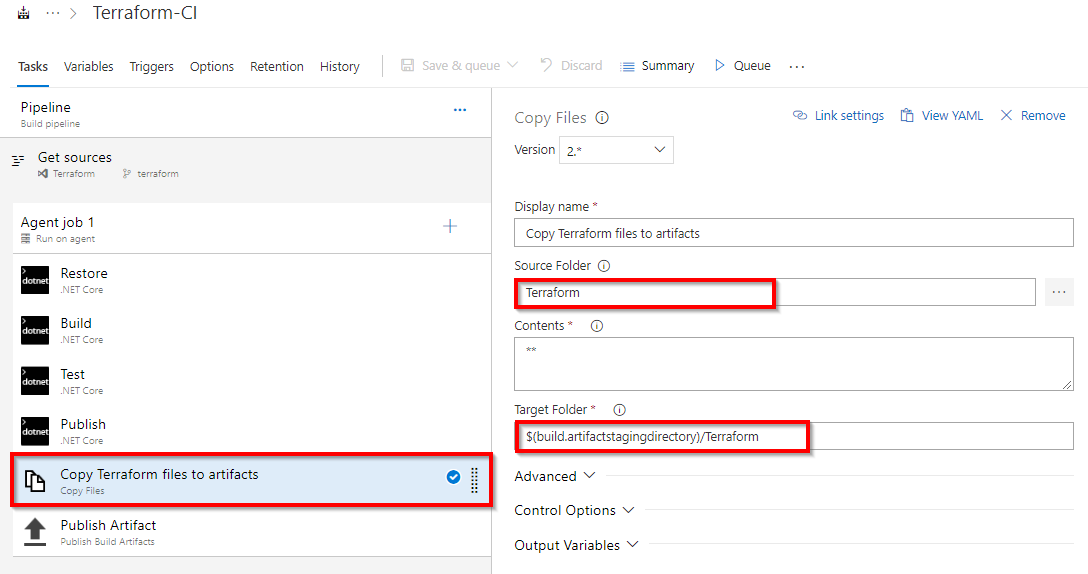
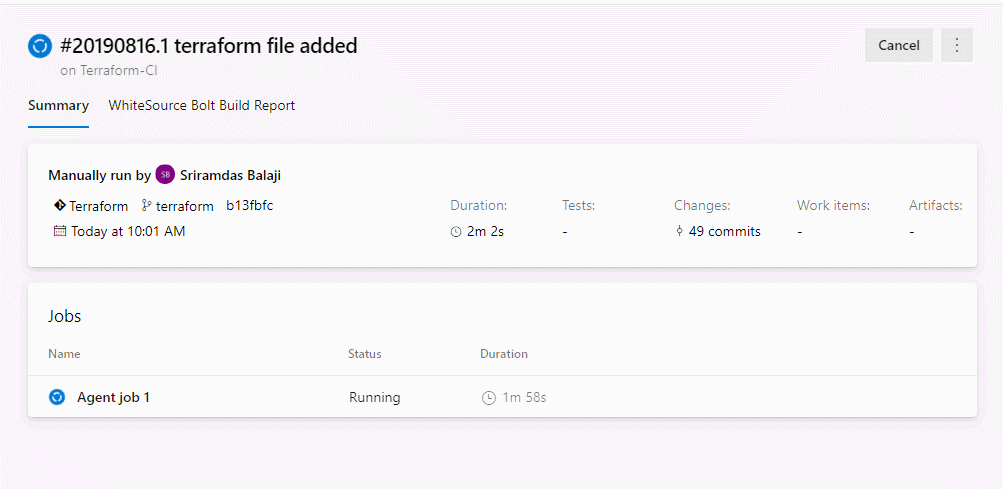
Challenge 3: Deploy resources using Terraform in Azure CD Pipeline

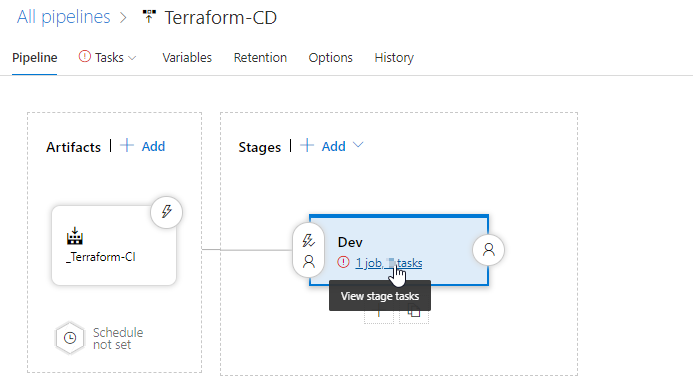
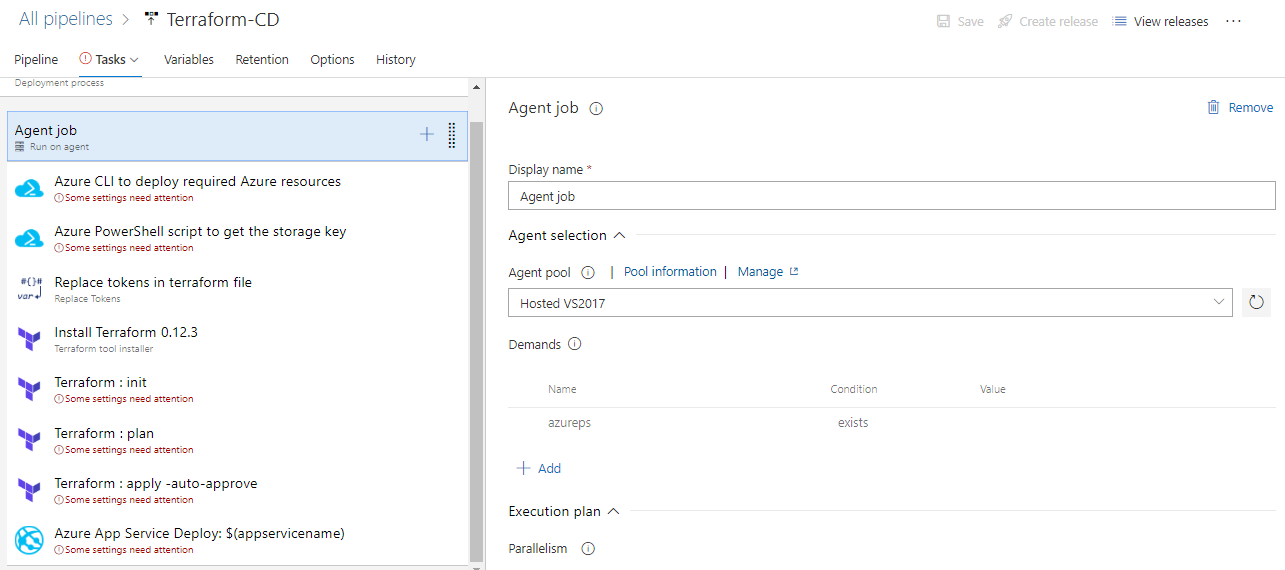
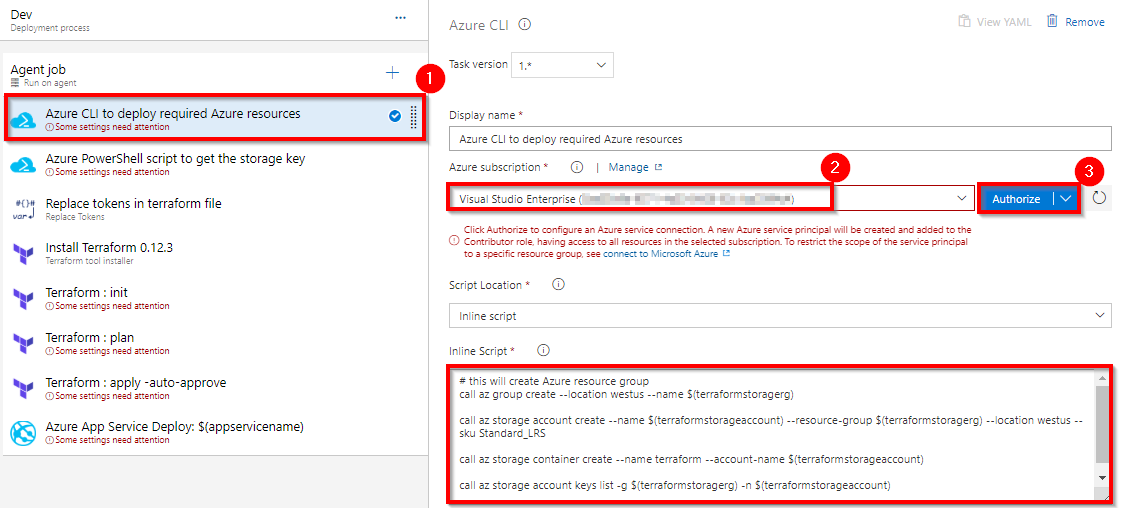
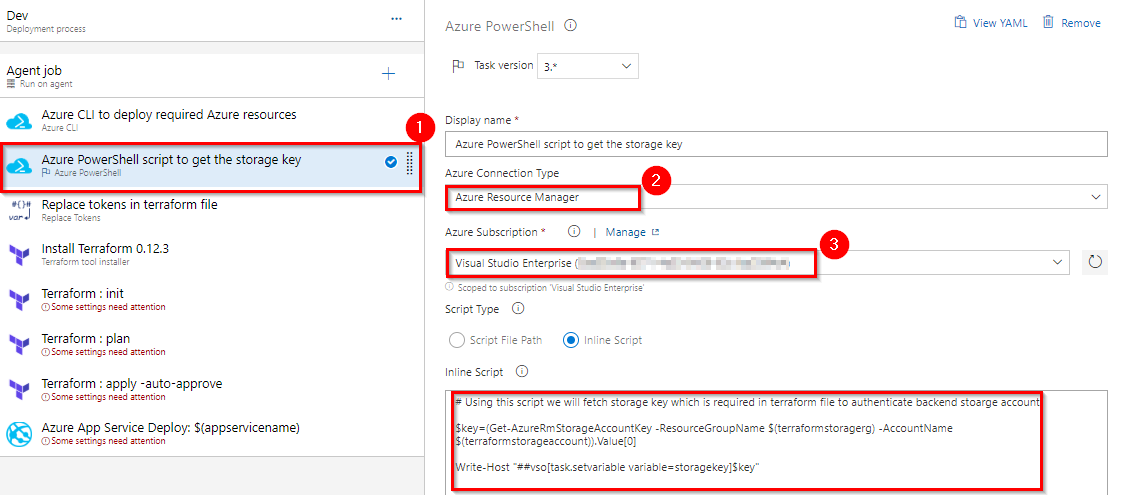
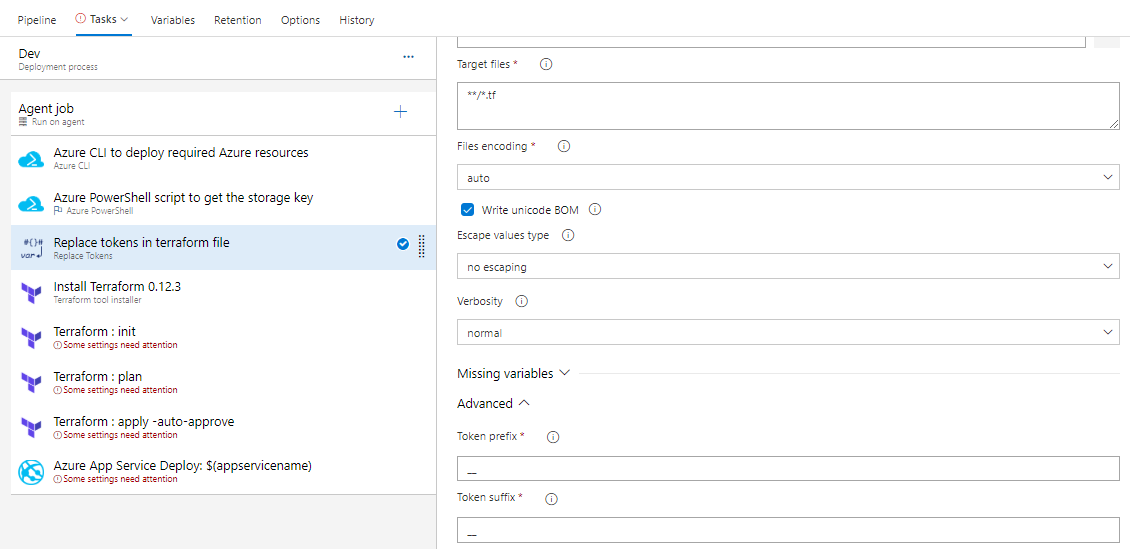

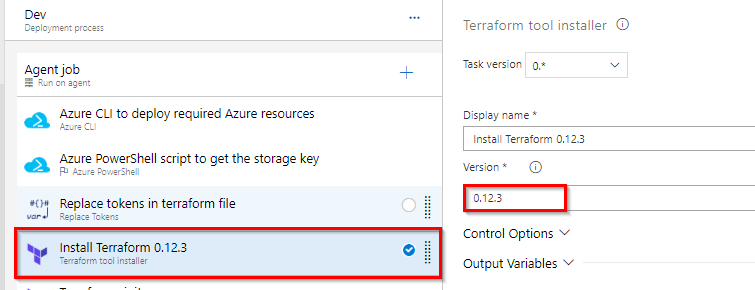


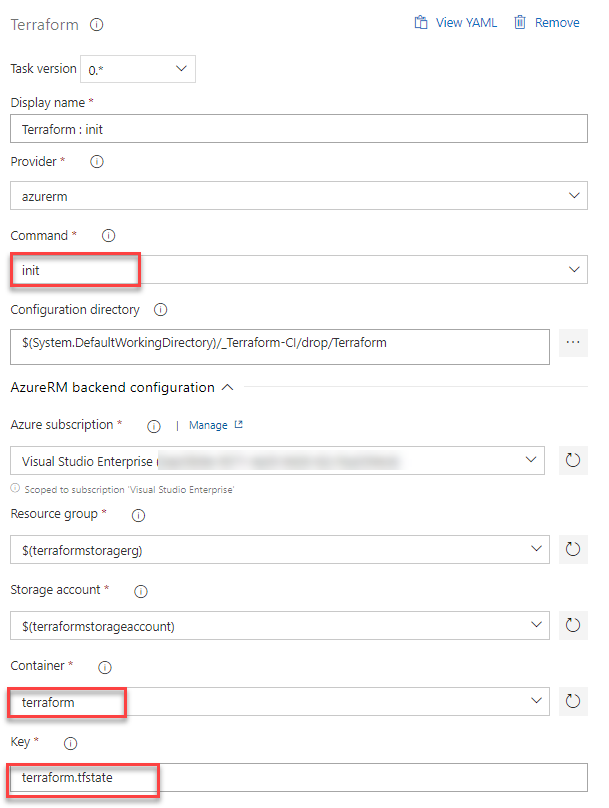
terraform init command. The terraform init command looks through all of the *.tf files in the current working directory and automatically downloads any of the providers required for them. In this example, it will download Azure provider as we are going to deploy Azure resources. For more information about terraform init command click here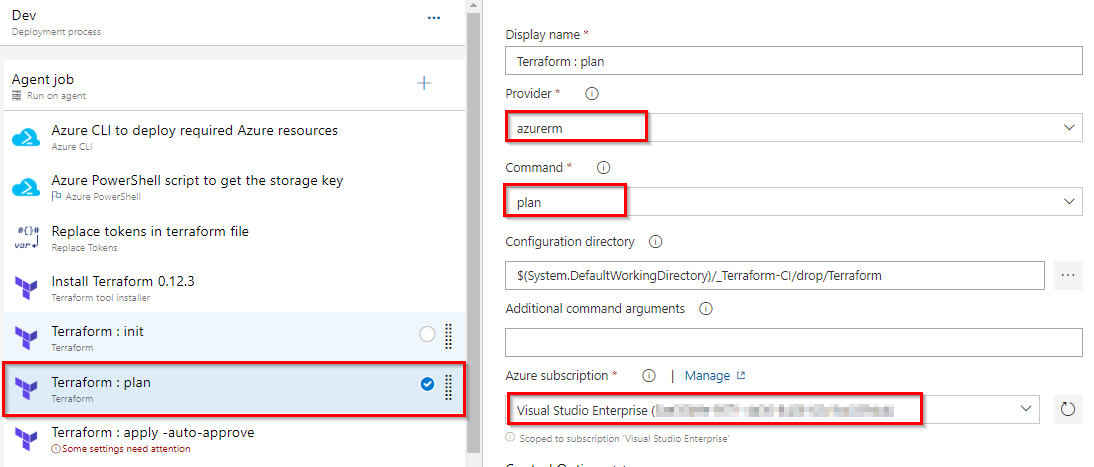
terraform plan command is used to create an execution plan. Terraform determines what actions are necessary to achieve the desired state specified in the configuration files. This is a dry run and shows which actions will be made. For more information about terraform plan command click here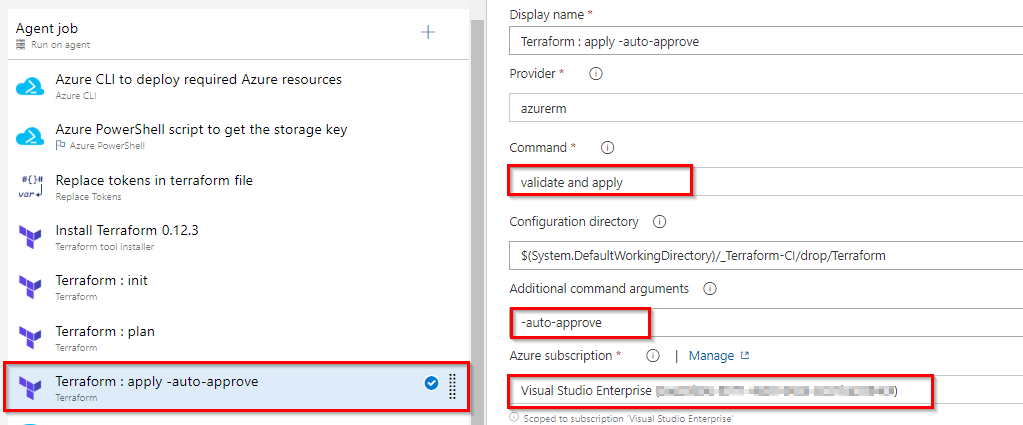
terraform apply command to deploy the resources. By default, it will also prompt for confirmation that you want to apply those changes. Since we are automating the deployment we are adding auto-approve argument to not prompt for confirmation.